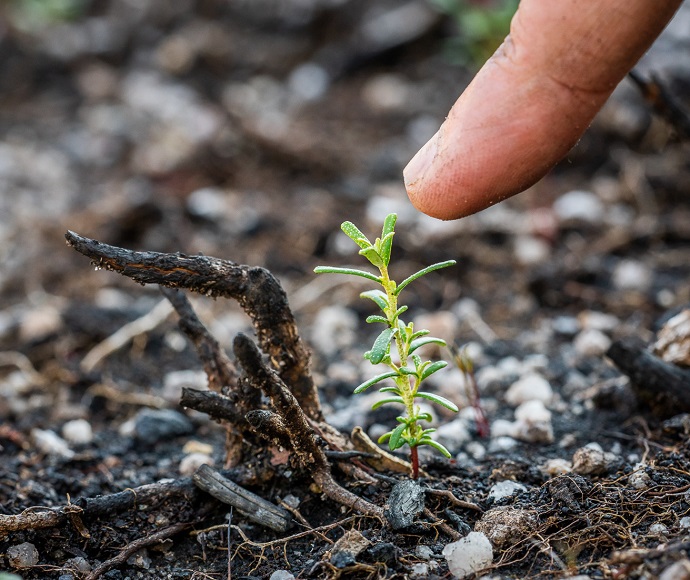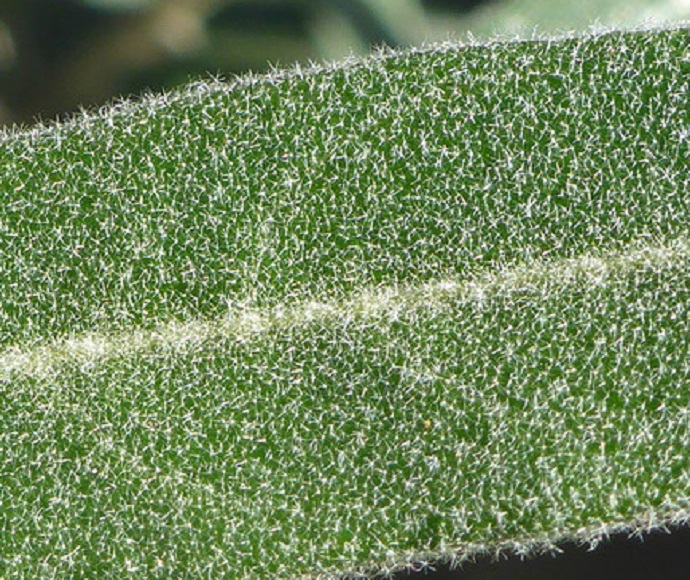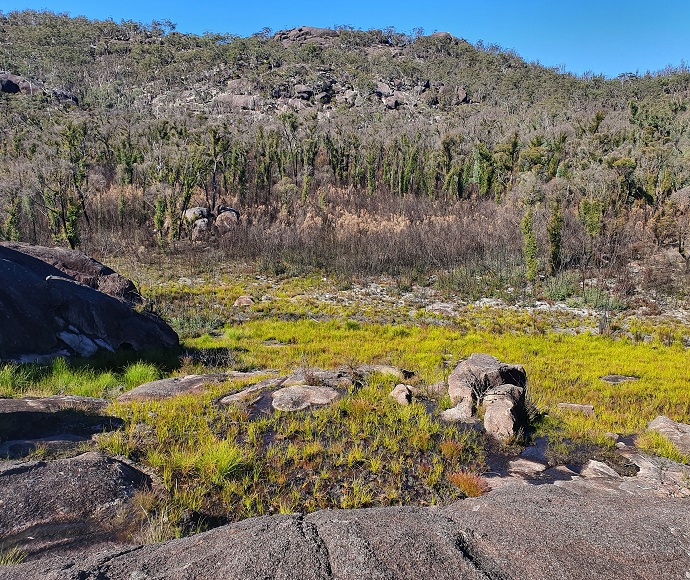After an incredibly challenging start to the year, with our environment facing bushfires and drought, monitoring of threatened species is helping us understand how things are responding.

Over recent months, Threatened Species Officers from the Saving Our Species (SoS) program have gone into the field to assess the severity and impact of the bushfires and drought on a range of threatened flora. Here, we take a closer look at how five threatened plants in the north eastern part of New South Wales have responded.
Rusty desert phebalium
Grave concerns were held for the survival of the endangered shrub rusty desert phebalium (Phebalium glandulosum subsp. eglandulosum) when the Torrington Fire in the New England Tablelands burnt intensely across the Binghi Plateau during November 2019. Prior to the fires, drought and browsing by goats had seen the population of this endangered subspecies dwindle to just to 49 plants.
 Threatened Species Officers were pleasantly surprised when they visited the bushfire-ravaged Torrington State Conservation Area to find 231 phebalium seedlings across four sub-populations. The image at left shows the bushfire ravaged rock outcrop that contains the largest population of the rusty desert phebalium, and the image at top right shows the strong seeding fire response demonstrating the remarkable resilience of this species.
Threatened Species Officers were pleasantly surprised when they visited the bushfire-ravaged Torrington State Conservation Area to find 231 phebalium seedlings across four sub-populations. The image at left shows the bushfire ravaged rock outcrop that contains the largest population of the rusty desert phebalium, and the image at top right shows the strong seeding fire response demonstrating the remarkable resilience of this species.
There is now hope for the rusty desert phebalium. Threatened Species Officers will cage surviving seedlings to protect them from grazing by goats and will continue to monitor recovery.
 Rodd's star hair
Rodd's star hair
The endangered Rodd's star hair (Astrotricha roddii) is recovering after drought within a fenced goat exclusion zone in Kings Plains National Park. The recovering plants have all sprouted from existing plants.
SoS contractors have recently installed additional fencing to increase the goat exclusion zone by 1 hectare and protect more of the population
Phyllanthus microcladus
 The entire dry rainforest remnant at one of the Shannon Creek sub populations of Phyllanthus microcladus was burnt in the 2019/20 bushfires. This followed an extended drought period and high temperatures. Initially, it was thought that all phyllanthus plants had been killed; however, following heavy rains in mid-February 2020, a significant number of stems are re-shooting. The western-most known occurrence of Phyllanthus microcladus in New South Wales occurs within private property along the Nymboida River, an area which was also severely burnt in November 2020.
The entire dry rainforest remnant at one of the Shannon Creek sub populations of Phyllanthus microcladus was burnt in the 2019/20 bushfires. This followed an extended drought period and high temperatures. Initially, it was thought that all phyllanthus plants had been killed; however, following heavy rains in mid-February 2020, a significant number of stems are re-shooting. The western-most known occurrence of Phyllanthus microcladus in New South Wales occurs within private property along the Nymboida River, an area which was also severely burnt in November 2020.
Initial post-fire monitoring at both sites revealed phyllanthus is showing positive signs of recovery. Threatened Species Officers will continue to monitor to see how phyllanthus responds longer-term.
Gibraltar mallee and Gibraltar grevillea
 With limited numbers and restricted distribution, the threatened Gibraltar mallee (Eucalyptus dissita) and Gibraltar grevillea (Grevillea rhizomatosa) are only found in the Gibraltar Range and Washpool national parks, which were hit hard by the 2019–20 bushfires.
With limited numbers and restricted distribution, the threatened Gibraltar mallee (Eucalyptus dissita) and Gibraltar grevillea (Grevillea rhizomatosa) are only found in the Gibraltar Range and Washpool national parks, which were hit hard by the 2019–20 bushfires.
Threatened Species Officers traversed an expanse of rugged bush to find out how the known populations of these 2 species have fared post fire. They found the Gibraltar mallee was resprouting well from lignotubers. Tall mallee stems were dead but still standing. The officers tagged the stems for follow- up monitoring. The Gibraltar grevillea was found to be resprouting well from rhizomes – even the smallest resprouts could all be traced back to larger roots. Two new populations of this species were also discovered, improving the conservation security of this species further.
Initial fire and drought responses have varied across species, with ongoing recovery monitoring required longer term. This significant and ongoing work will inform threatened species management decisions and deliver more effective and targeted on-ground actions.






